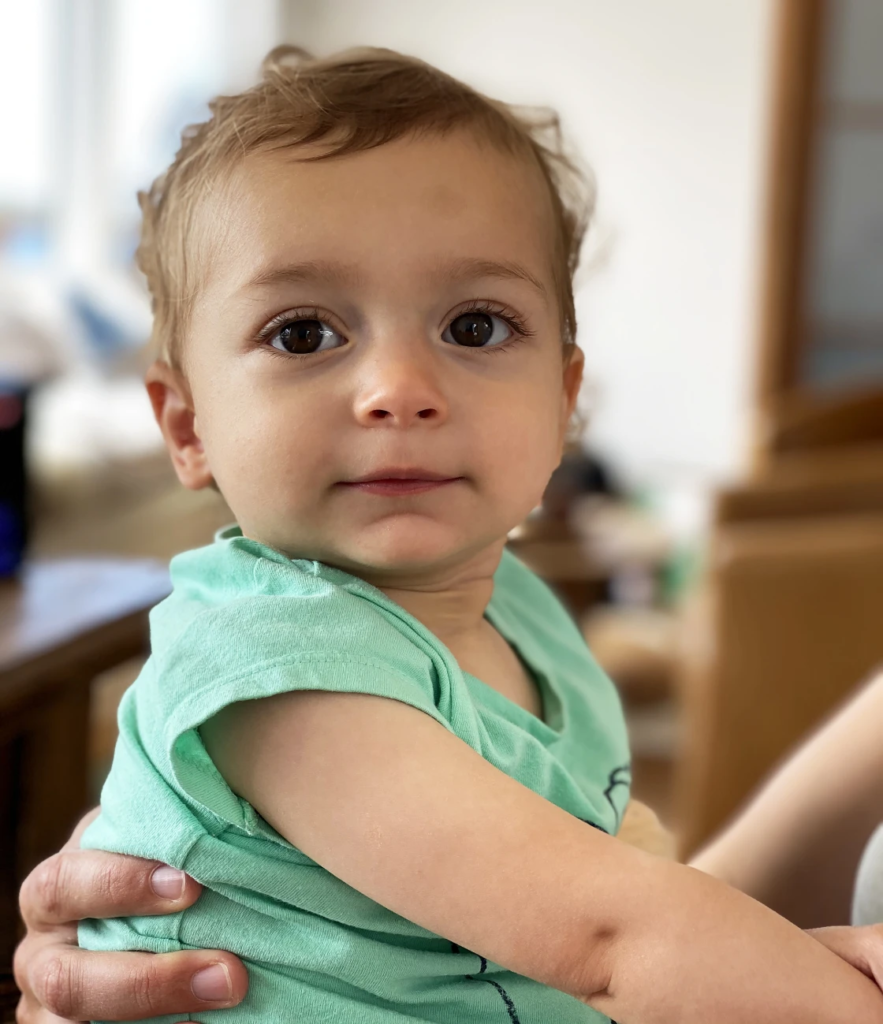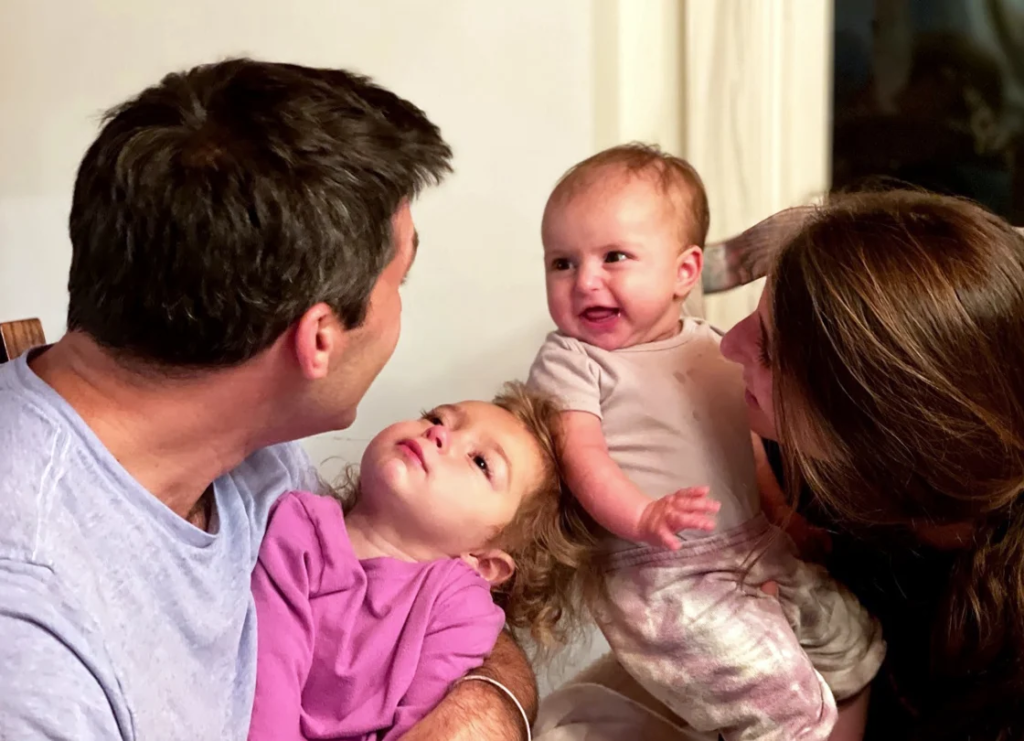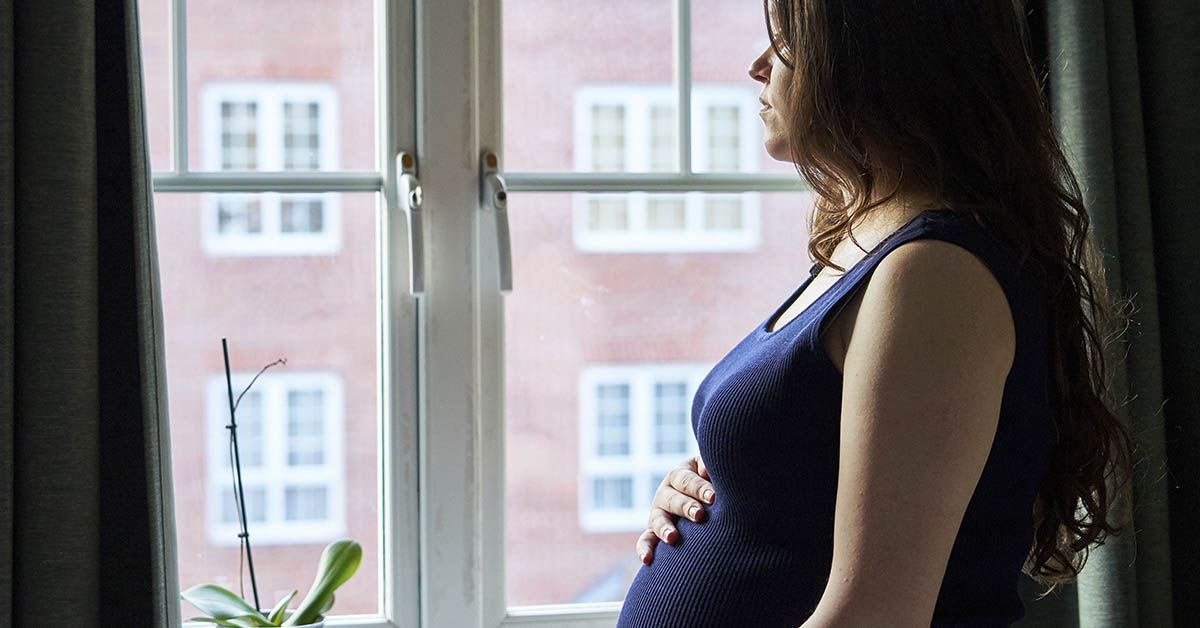Tay-Sachs disease is a rare genetic disorder that usually appears during infancy. Most children with this disease live only a few years. Havi Lev Goldstein only had two years, four months, and sixteen days. She was the firstborn for her parents, Myra and Matt Sack, who learned about her diagnosis when she was 15 months old. Since then, they have had two more children, and Myra opens up about welcoming the newest baby while grieving his older sister.
“First-time parents of a dying child”

Havi was born September 4, 2018, and only lived until January 20, 2021. Her Tay-Sachs diagnosis was a shock to her parents. The genetic disorder is often found amongst the Ashkenazi Jewish population, so Matt and Myra got tested before they decided to have children. Myra was a carrier, but Matt’s results were negative. Since both parents need to be carriers for the fetus to be at risk of inheriting the disease, they thought all was well. However, the doctor had accidentally given Matt the wrong test; he was a carrier for Tay-Sachs. “In an instant, we were transformed from being not only first-time parents, but now first-time parents of a dying child,” Myra wrote in a blog post on Upworthy. [1]
The parents decided to make the most of every moment of Havi’s life. They knew she wouldn’t have more than two birthdays, so they celebrated it every week. Every Friday night, they’d invite their friends and family members to a Shabbirthday party. It was a combination of a Shabbat and Birthday celebration, filled with fancy dinners, songs, balloons, prayers, cakes, and challah (a traditional Jewish bread), which was Havi’s favorite food. “We didn’t pretend to be happy on these Shabbirthdays. We weren’t, we were heartbroken.” As Myra explained, “We didn’t throw parties to distract or numb the pain. We found moments of beauty and celebration embedded in and between our deepest pain.” Havi enjoyed a total of 57 Shabbirthdays.
Read: Parents share heartbreaking final photo of them comforting brave daughter hours before she died of cancer
Welcoming One Child While Grieving Another
Anyone grieving knows that a loved one’s death is not a one-time event. The loss reoccurs every time the person is missing from where they’re supposed to be, and every time the mourner thinks “they would have loved this.” For Myra and Matt, the grief is especially painful considering how many events and milestones Havi has missed. For example, she couldn’t walk or talk because of her degenerating condition. But another major event is the birth of her baby brother Ezra.
Myra and Matt’s second child, Kaia, was born on June 30, 2020, just in time for Havi’s 29th Sabbirthday. However, she didn’t get to meet her baby brother, Ezra, who was born in August. Havi’s absence was tangible throughout; the happy occasion involved much grieving. “So what is it like to welcome a new being into your family after experiencing the loss of a child?” Myra wrote in a post for Today. [2] “Profoundly and indescribably precious and hard. There is nothing more miraculous than the start of a new life. And so many moments in these first days and weeks have been constant reminders of Havi’s absence. At times it feels impossible for joy and anguish to coexist, yet for us it must.”

The warning signs came when Havi wasn’t progressing properly. She began physical therapy and occupational therapy at the recommendation of a pediatric neurologist, who had assured them during the first visit that Havi wasn’t sick, just taking her time to develop. When Havi still didn’t progress, they went to another neurologist; in fact, Havi had begun regressing. They were referred to a neuro-geneticist for an MRI, who noticed that Havi startled very easily, a sign of Tay-Sachs.
Soon after, the parents received the devastating diagnosis. They were pregnant with Kaia at the time, but tests showed she was fortunately not affected. For Ezra, they used IVF, so they could biopsy the embryos and test for diseases before implantation. [3]
Read: ‘My Daughter’s Rare Disease Was A Mystery For Years. Here’s How We Finally Got A Diagnosis’
More About Tay-Sachs
Tay-Sachs disease occurs from a deficiency in the enzyme that breaks down substances in nerve cells. This deficiency comes from a mutated gene that is inherited by both parents. It leads to nerve cells in the brain and spinal cord degenerating and dying, causing progressive neurological dysfunction.
Tay-Sachs disease has three forms. Classic infantile is most common and appears in infants. Juvenile can occur anytime during childhood, commonly during the ages of two and five. And, late-onset, which comes during adolescence or young adulthood, and sometimes even later. Symptoms in classic infantile typically include slowed development, regression in development, and difficulty breathing and swallowing. At age two, many experience loss of vision, mental skills, muscle function, as well as seizures. [4]
As of now, there is no cure or effective therapy for this disorder. Treatments work to manage symptoms and improve quality of life. Support for patients and their families is also important to help manage the stress and grieving involved. Myra and Matt continued the Shabbirthdays to gather friends and loved ones to honor Havi after her passing.
“Sitting in Havi’s old room, in Ezra’s new room, it is impossible to not feel like I am drowning in swirling waves of the most polarized emotions,” Myra wrote. “…In the moments around Ezra’s brand-new life, I am embraced by the thin veil separating our existence from the place before and the place after. These moments of mystery challenge our understanding of ‘being.’ It is no coincidence that birth and death — the extremes of our existence — are the moments when we most honestly reconcile with ourselves.”
Keep Reading: Overcoming Hydrocephalus: The Miracle Story of Parker Grelecki
Sources
- “A mother’s letter on the passing of her young daughter is a must-read on grief, love and loss.” Upworthy. Myra Sack. January 20, 2022
- “Grieving the child I lost while welcoming a new baby into our family.” Today. Myra Sack. October 13, 2022
- “On Losing a Toddler to Tay-Sachs.” Jewish Boston. Kara Baskin. September 9, 2022
- “Tay-Sachs disease: What to know.” Medical News Today. Mary West. September 20, 2020

